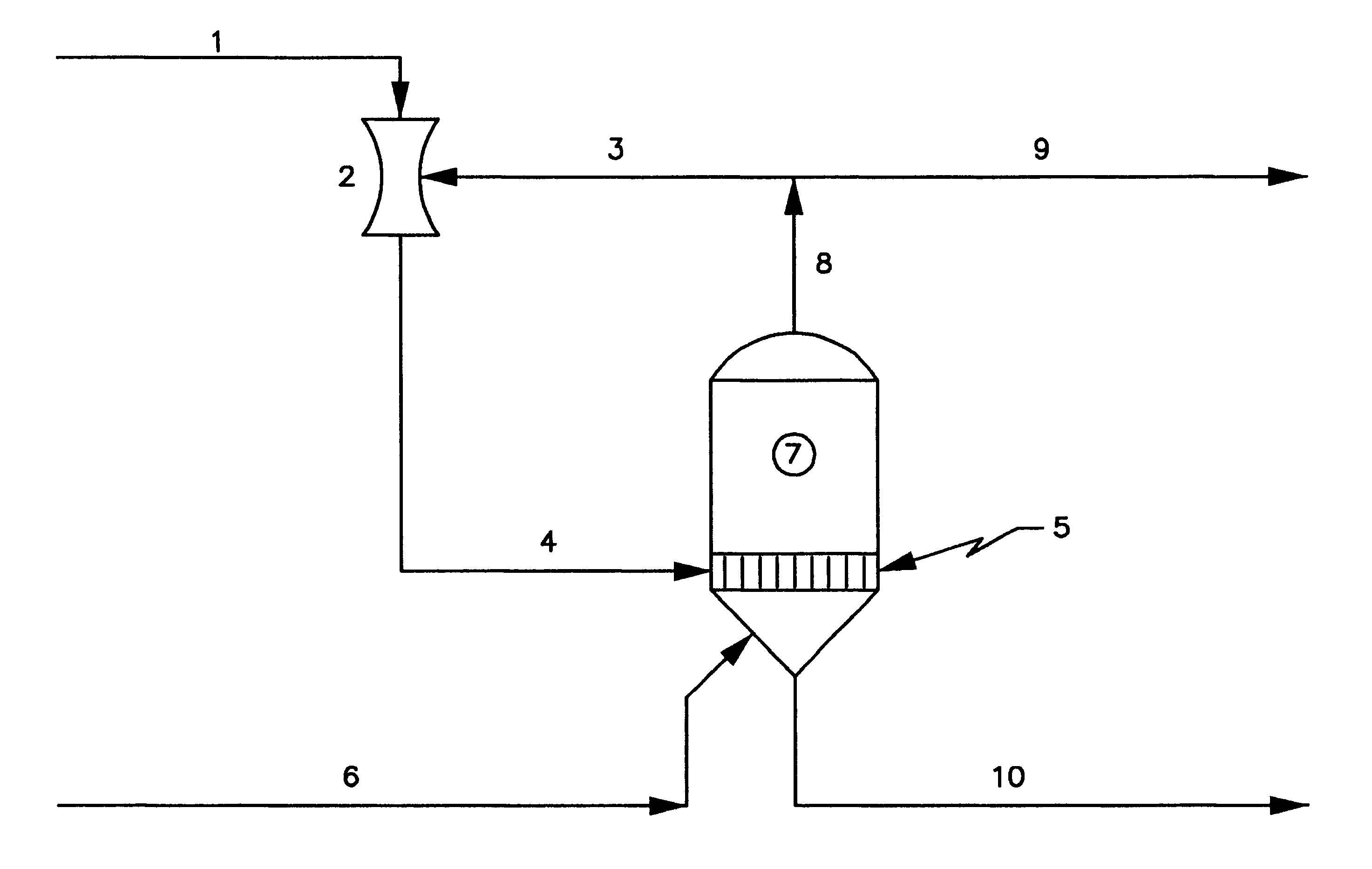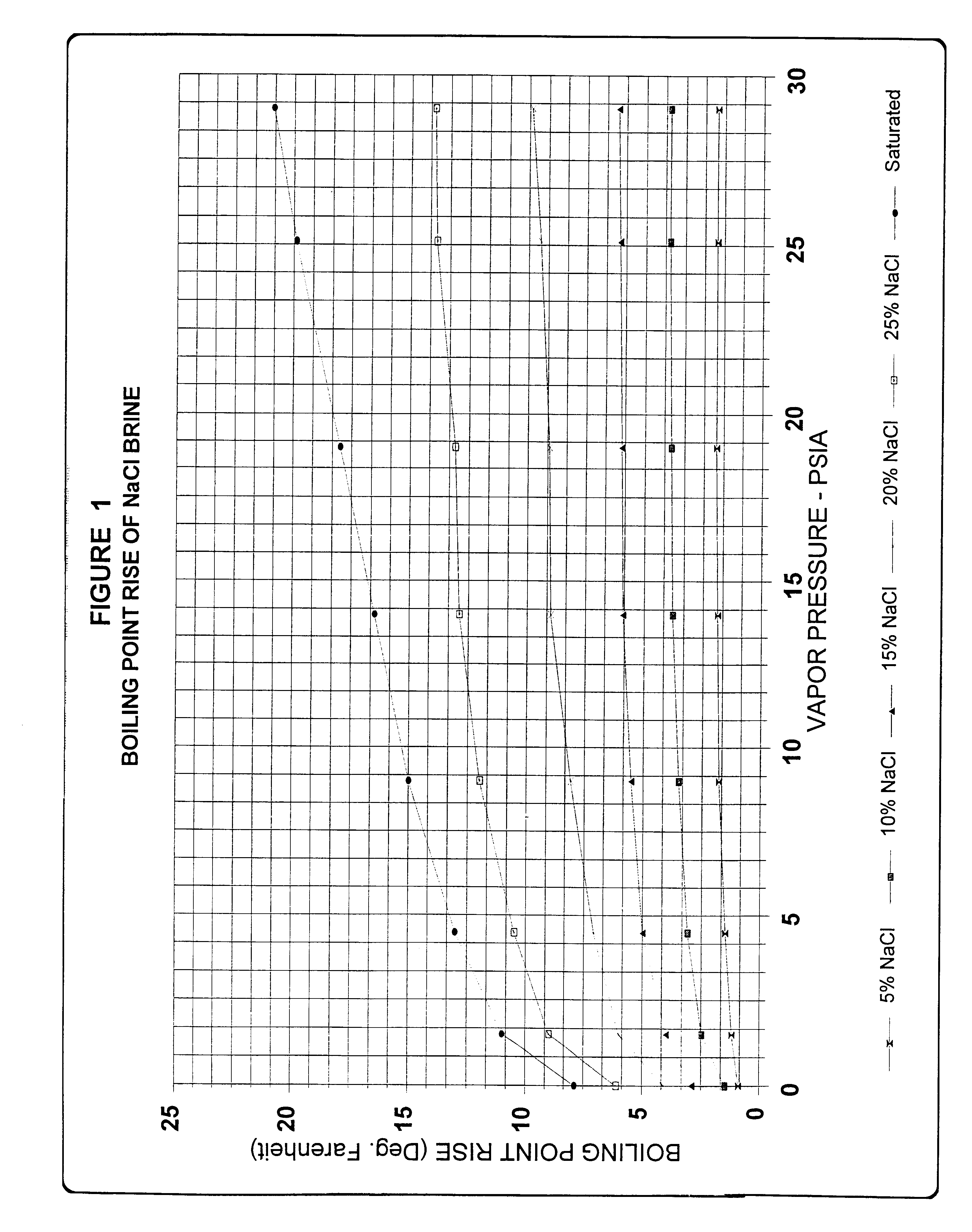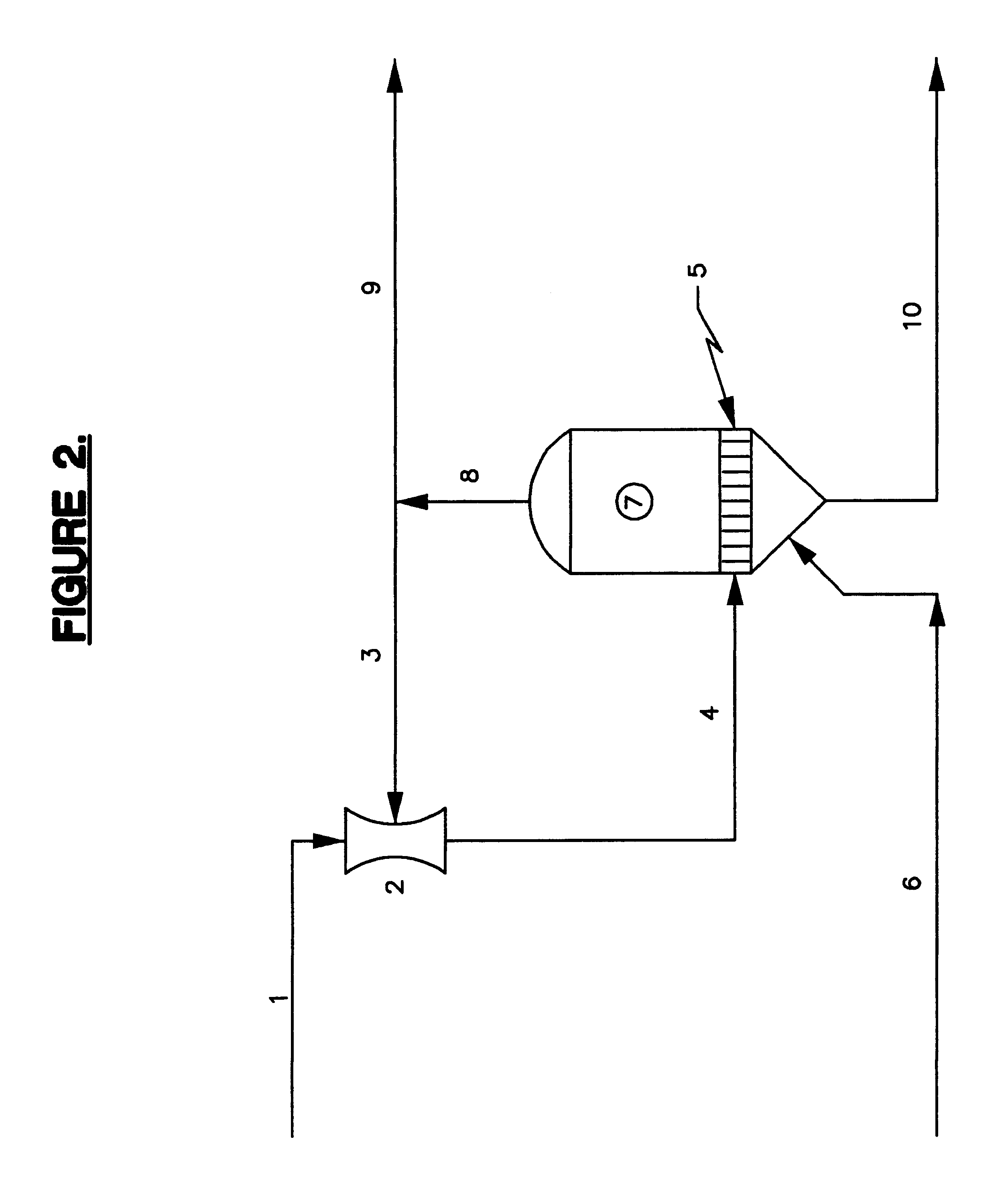Concentration of chlor-alkali membrane cell depleted brine
a technology of chloralkali and membrane cells, applied in the direction of alkali metal halide purification, electrolysis components, chemistry apparatus and processes, etc., can solve the problems of high capital costs, increased costs, and the need for quadruple or quintuple effect evaporators constructed of expensive construction materials
- Summary
- Abstract
- Description
- Claims
- Application Information
AI Technical Summary
Benefits of technology
Problems solved by technology
Method used
Image
Examples
Embodiment Construction
We have found that considerable capital and operating costs are saved by concentrating the depleted brine and recycling it to the membrane cells at a sodium chloride concentration of about 22-26 weight percent. In accordance with our invention this is accomplished by providing a system that takes advantage of the fact that weaker brines boiling under reduced absolute pressures exhibit significantly smaller boiling point rises (BPR) than saturated brine boiling at atmospheric pressure or higher. By operating at the smaller BPR, reconcentration of the weaker brine to 22-26 weight percent NaCl is accomplished at low temperatures, thus allowing for efficient vapor compression and the use of steam jet thermocompression. In accordance with this invention, because the concentrator systems operate at significantly lower temperatures, for example at or below about 180 degrees Fahrenheit instead of temperatures up to about 240 degrees Fahrenheit as in the prior art, and because the concentrat...
PUM
| Property | Measurement | Unit |
|---|---|---|
| Temperature | aaaaa | aaaaa |
| Temperature | aaaaa | aaaaa |
| Percent by mass | aaaaa | aaaaa |
Abstract
Description
Claims
Application Information
 Login to View More
Login to View More - R&D
- Intellectual Property
- Life Sciences
- Materials
- Tech Scout
- Unparalleled Data Quality
- Higher Quality Content
- 60% Fewer Hallucinations
Browse by: Latest US Patents, China's latest patents, Technical Efficacy Thesaurus, Application Domain, Technology Topic, Popular Technical Reports.
© 2025 PatSnap. All rights reserved.Legal|Privacy policy|Modern Slavery Act Transparency Statement|Sitemap|About US| Contact US: help@patsnap.com



